BBC Earth newsletter
BBC Earth delivered direct to your inbox
Sign up to receive news, updates and exclusives from BBC Earth and related content from BBC Studios by email.
The Green Planet
They’re big, they’re incredibly old – and some can even turn ants into zombies!
Fungi are one of the most diverse organisms on Earth and contribute to many aspects of life as we know it. They’re the most populous kingdom on the planet – an estimated 3.8million fungi exist worldwide – and yet, more than 90% of them are currently unknown to science. And, you might be surprised to learn, the mushroom kingdom can be quite animalistic, too: they breathe like us, and some are known to even eat flesh!
Here are some freaky, fascinating facts about the world of fungi.
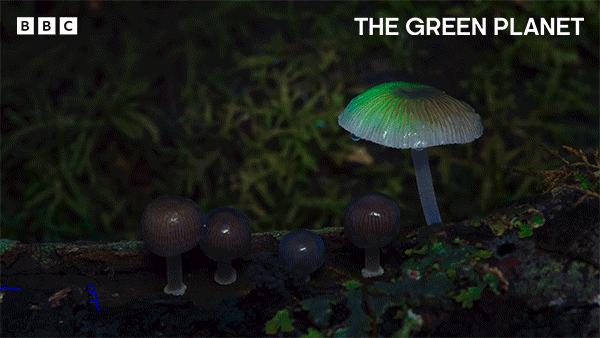
Strange as it sounds, some mushrooms are bioluminescent. They achieve this thanks to luciferins, the same compounds that make fireflies light up at night and some sea creatures glow.1 This surprising skill – known as foxfire – is used to attract insects. They then spread the mushroom spores elsewhere in the forest, allowing the fungi to reproduce. One example is the Mycena haematopus, or bleeding fairy helmet, which can be found in Europe, Asia, and North America.2
In the future, the natural phenomenon of bioluminescence could be used to genetically engineer luminescent trees as a – quite literally – green alternative to streetlights.3
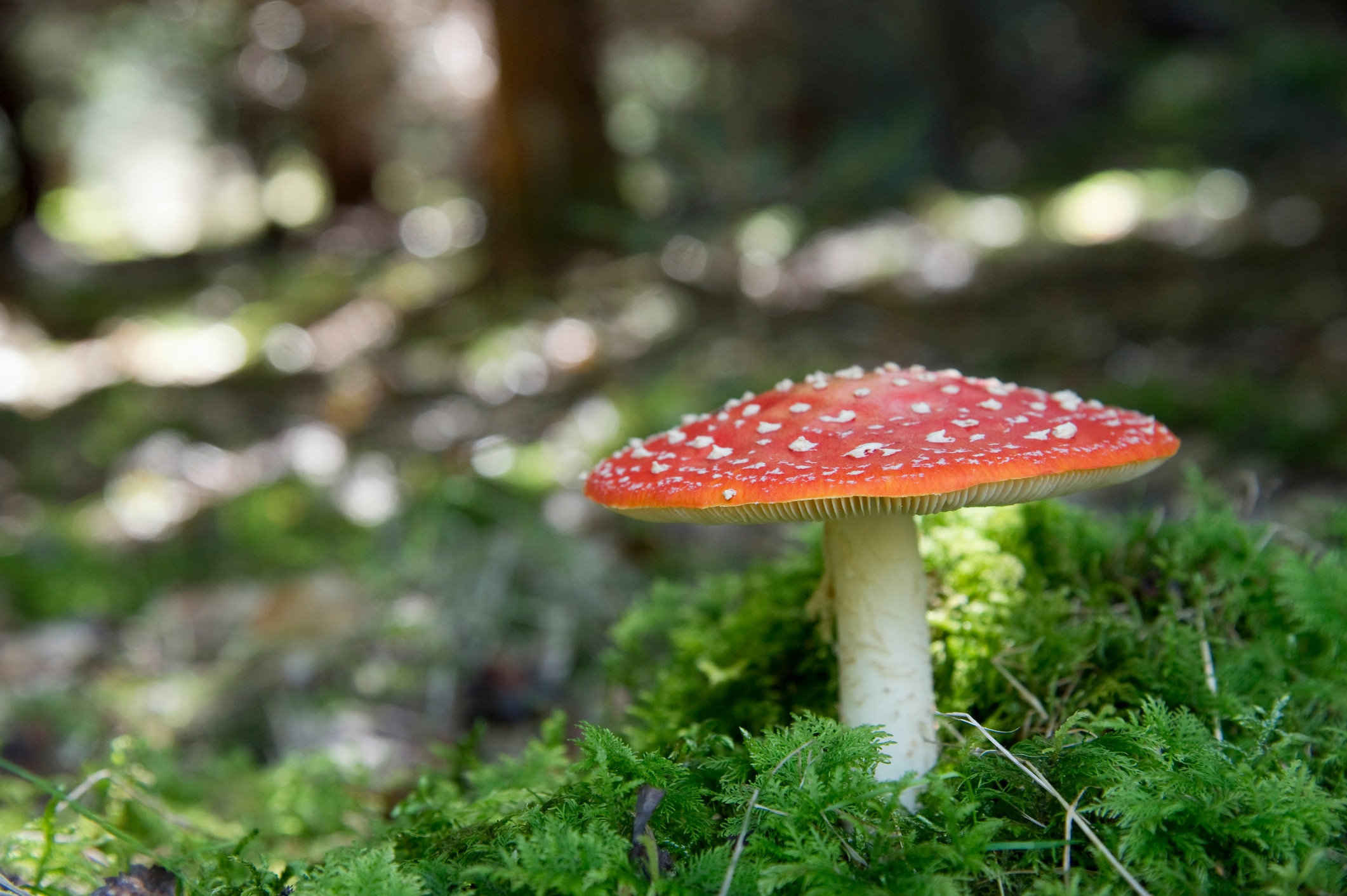
A fungus is neither plant nor animal and belongs to its own ‘fungi kingdom’. But, genetically speaking, they’re more closely related to animals than plants.4 Like us, they ‘breathe in’ oxygen and give out CO2 and, as such, even contribute to global warming!5 Unlike plants, they don’t need sunlight to reproduce, instead they rely on other organisms for food – just like animals. Also, their cell walls contain chitin, which is found in the exoskeletons of insects, the shells of crustaceans, and the beaks of octopuses.
Sure, we’ve a lot less in common with a toadstool than a chimp. But next time you’re tucking into mushrooms on toast and thinking about how meaty they taste, don’t be too surprised. They’re closer to animal life than most people think.

Some fungi create zombie ants. Yes, you read that right: zombie ants! The fungus responsible is the Ophiocordyceps unilateralis, found deep in the Amazon rainforest. This sinister parasite infects the carpenter ant, growing through its body before eventually taking over its brain. It then compels the poor, hijacked insect to leave its nest and climb to a nearby plant – which just so happens to be in the perfect environmental conditions for fungus growth.
Here, over a number of days, it consumes the ant’s innards and sends a long stalk through its head, growing into a capsule of spores. These rain down on other unsuspecting victims, continuing the grim cycle.6

Some fungi have a more benign relationship with ants, however. Leaf-cutting ants in South and Central America work in harmony with Leucoagaricus gongylophorus.7 This fungus lives five metres underground and enlists an army of ants to collect freshly-cut leaves for it to eat! It even tells the ants what type of leaf it wants; ‘communicating’ with them via chemical signals.
Scouts work like waiters in a restaurant, carrying the food order to the workers above ground. The sight of leafcutter-ant ‘highways’ – millions of bugs, carrying up to 50,000 leaves a day – is an impressive spectacle.8
Additionally, Pseudonocardia bacteria cultures are reared on the ant-cuticle and this protects the Leucoagaricus from disease and other – invasive - fungi.9 In return, the Leucoagaricus provides the ants with a regular food supply of mini-mushrooms.
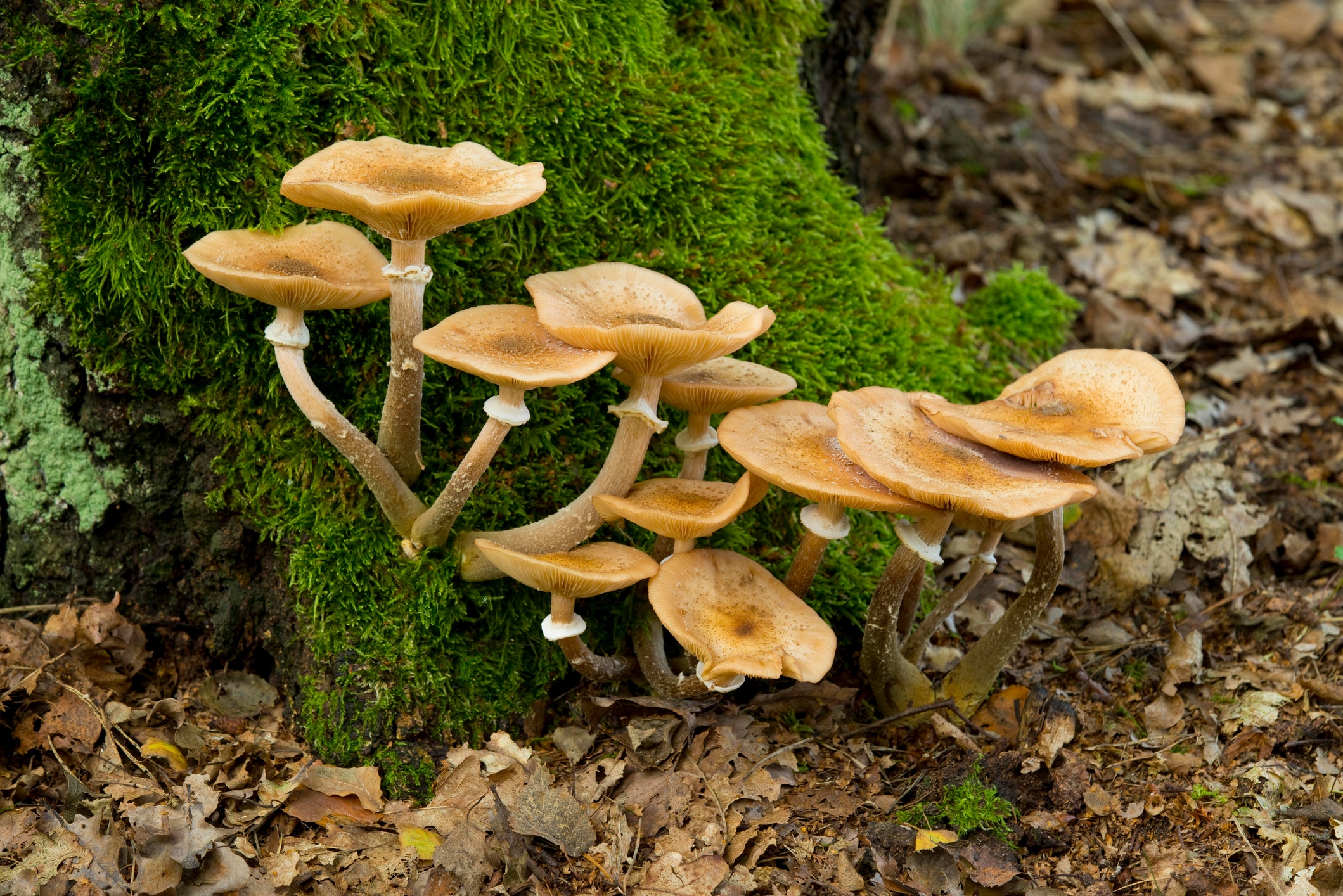
Forget the blue whale – the biggest living organism on the planet is a fungus known as the ‘honey mushroom’.10 But, despite its rather sweet-sounding name, it kills trees, feeding off both live and dead wood for nutrients.
Discovered in 1998, the Armillaria ostoyae covers 2,384 acres – almost 10 square kilometres – in the Blue Mountains of US state Oregon.
Not only is it a giant, it’s also been around for a while. Scientists say it’s at least 2,400 years, possibly even up to 8,650 years old!11

Itchy feet? Even if you’re a ‘two showers a day’ type, it might surprise you to learn that human feet are home to nearly 200 types of fungi. Although they live all over our bodies, their favourite spots to colonise and grow are the heel (80 types found), between the toes (40), and beneath toenails (60).
Most of these fungi are totally harmless. However, if they multiply, infections such as Athlete’s foot can occur.12
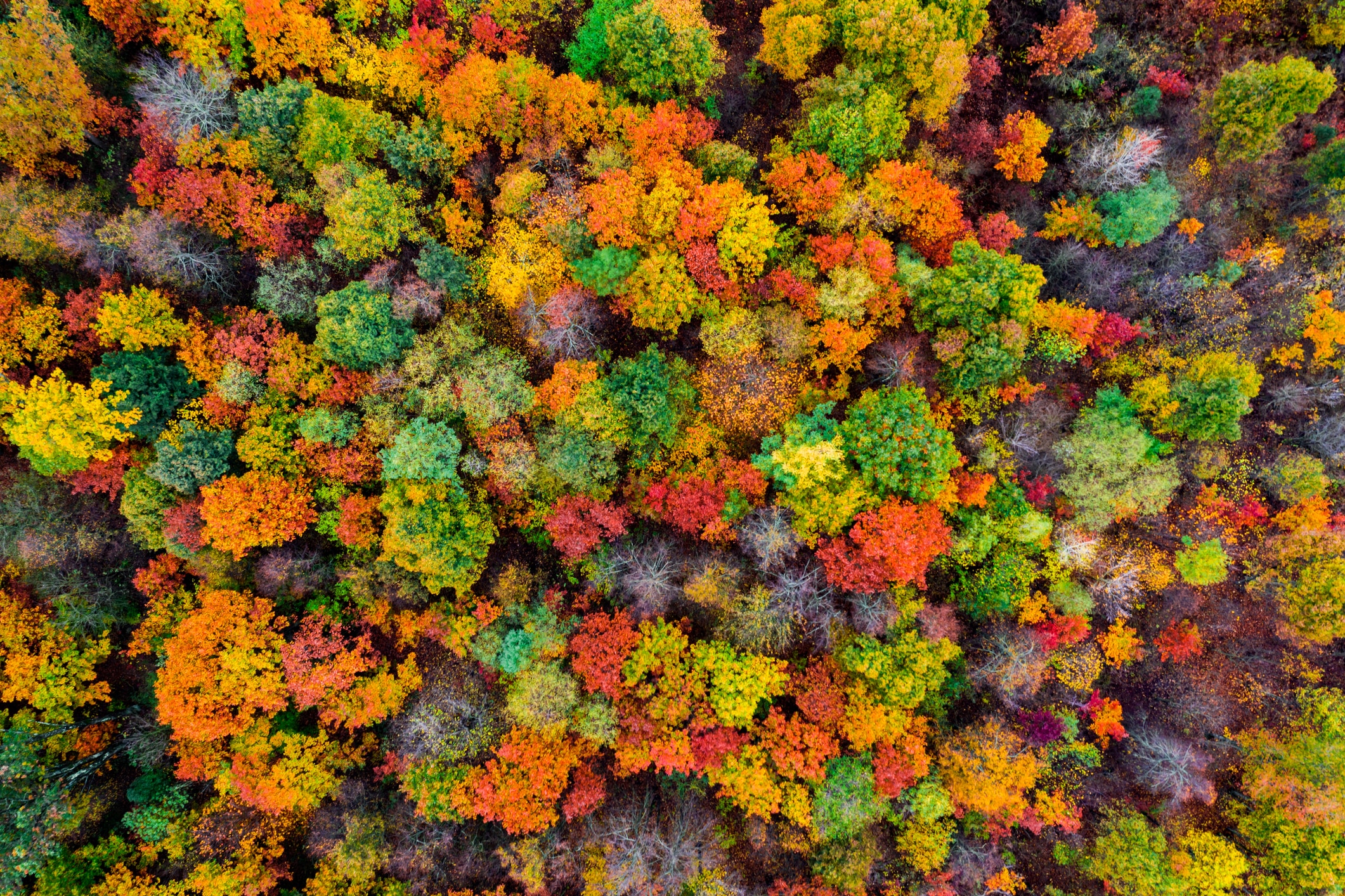
Did you know that fungi invented the internet? Sort of. Beneath every forest and wood lies a complex clandestine network of roots, fungi and bacteria that connects trees and plants to one another. It even has a name: the ‘Wood Wide Web’.13
This secretive social network of Mycorrhizal fungi is almost 500 million years old.14 The trees obtain nutrients that the fungi acquire from the soil, such as nitrogen and phosphorus – and in return, the fungi receive carbon-rich sugar from the trees’ roots. It’s this symbiotic relationship that allows trees to have underground conversations, such as issuing warnings about attacking insects, drought, and disease.15
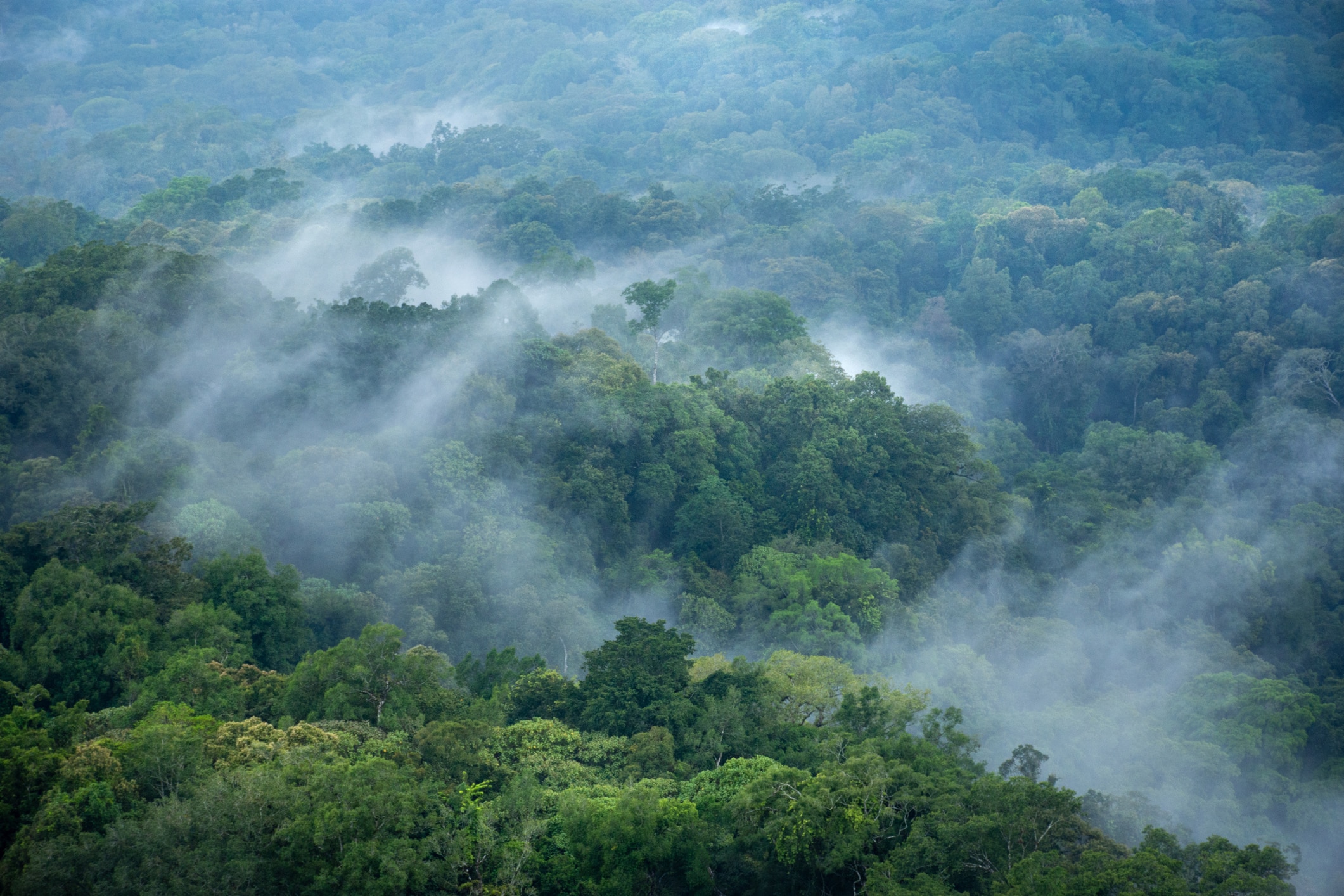
Mushrooms are also largely responsible for the rain in rainforests. Here, fungi release masses of spores into the air – and as they float above the forest, they attract moisture. Essentially, they act as nuclei for the formation of raindrops in clouds, which are low-lying in these warm, wet environments. And when these tiny, somersaulting balls have collected enough water around them, they fall back to earth as rain. In fact, 90 percent of tropical raindrops have a fungal spore at their heart.16
So, there you have it. Mushrooms really are odd little – and occasionally massive – things! And each seems to have its own secret kingdom.
Featured image © Buddy Mays | Getty
1. Bioluminescent Mushrooms 2. Bleeding Fairy Helmet 3. Natural Street Lights 4. More Animal than Plant 5. Mushrooms and Climate Change 6. Zombie Ants 7. A Kingdom of Ants 8. The 50,000 Leaves-a-Day Diet 9. Ant Anti-Fungal 10. The Largest Organism in the World 11. Ancient Fungus 12. Fungus Feet 13. Wood Wide Web 14. The 500-million-year-old Social Network 15. Woodland Hotline 16. Spore Raindrops
Article originally published February 2022.